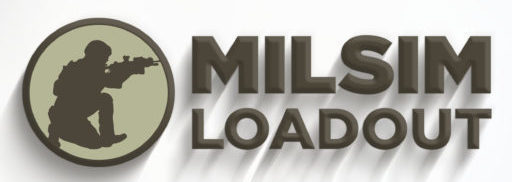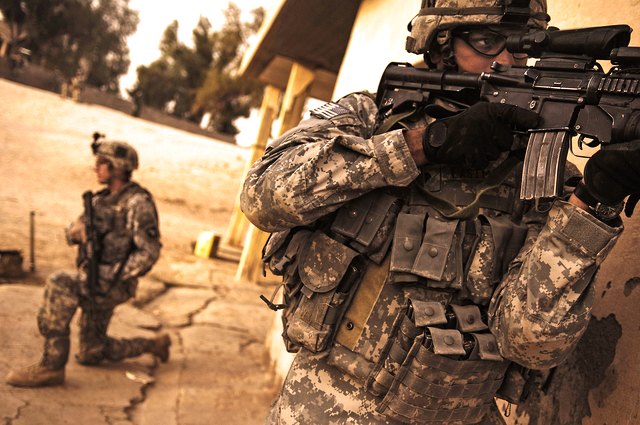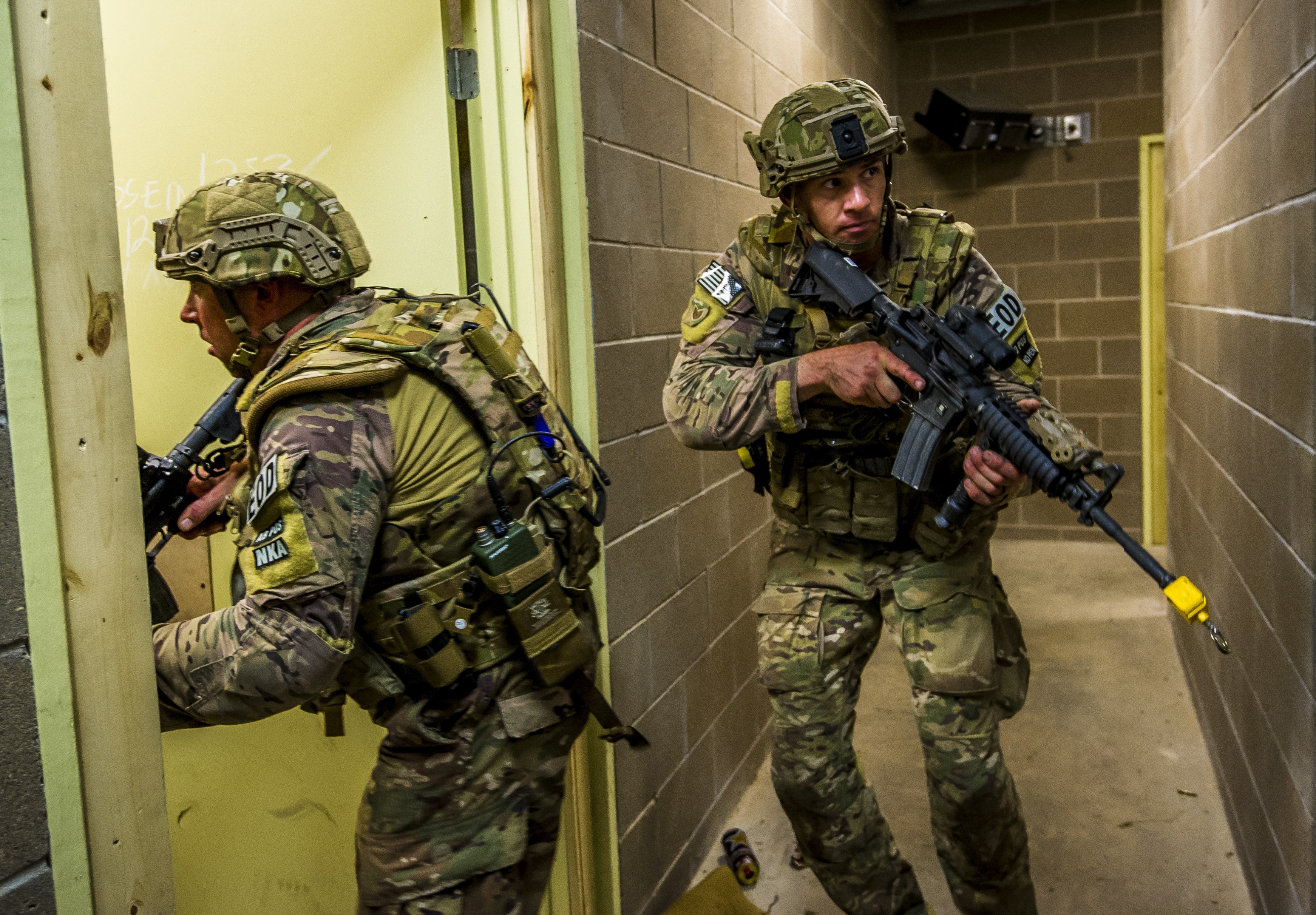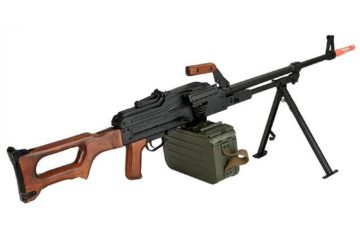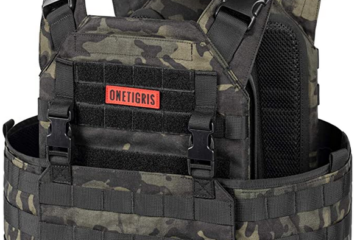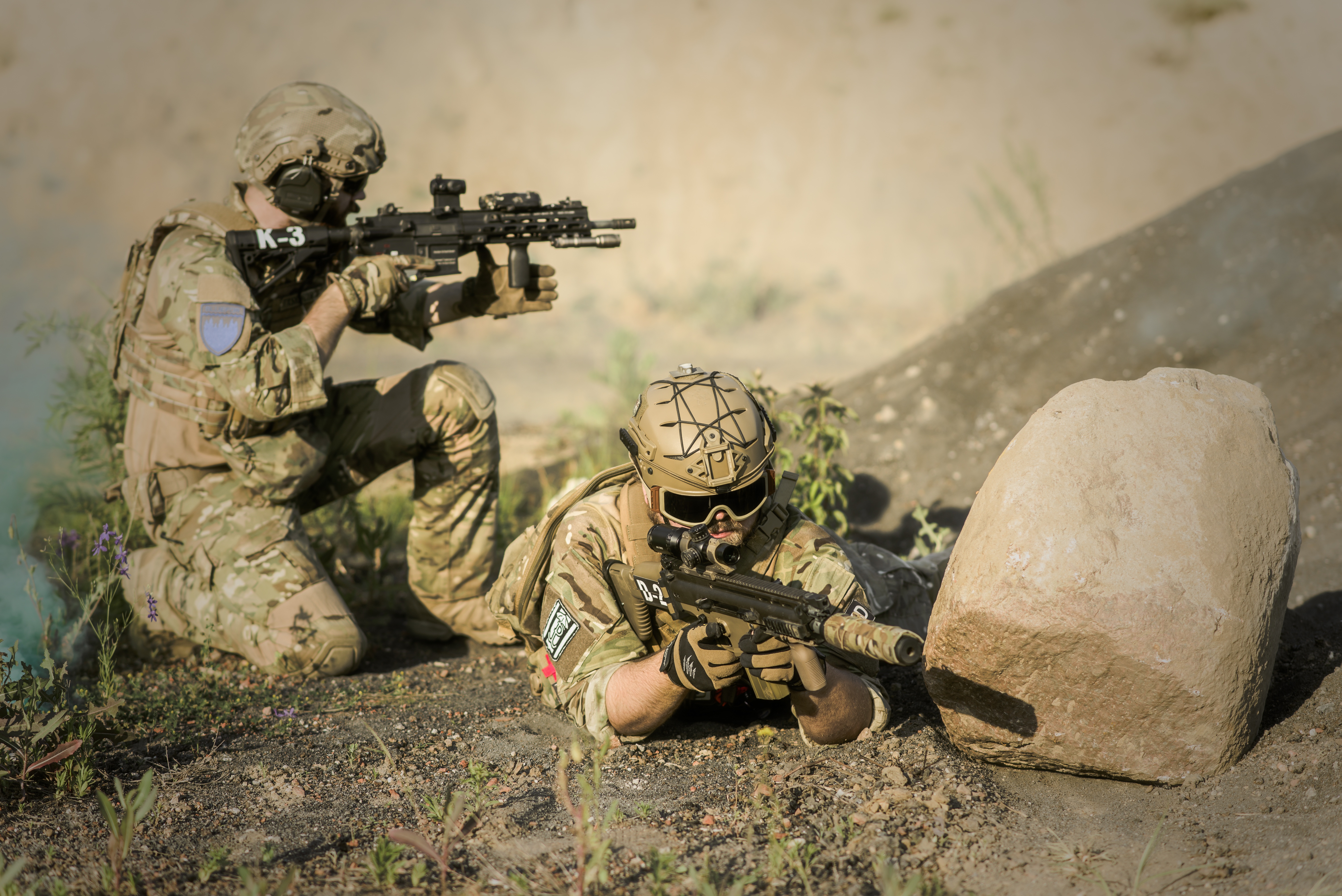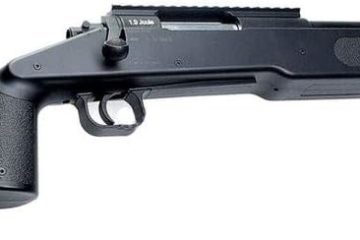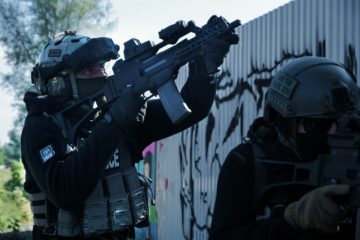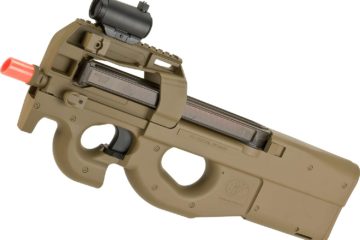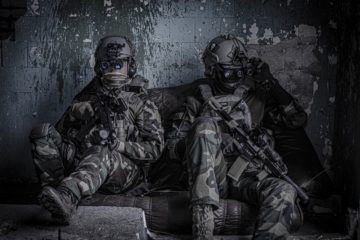We may earn money or products from the companies mentioned in this post.
Just like a real battlefield, MilSim CQB games are riddled with all sorts of landscapes, elevations, and terrains, all of which have their own particularities and nuances. In this guide, I will discuss some of the tactics utilized in MilSim CQB that will assist you in navigating such environments. Many of the tactics I will discuss are straight out of field manuals I have read and training programs that I have participated in my years of law enforcement and military. That being said, as an operator friend of mine told me very early in my career, there is more than one way to skin a cat.”
Movement
Stay Together
Rambo only stays alive in movies; there are no one man armies. Now, I know this is MilSim CQB, but why take the walk to respawn if you do not have to. Work with your teammates and devise strategies to attack complex problems within a scenario. Believe me, even the simplest structure will be filled with a plethora of deep angles and danger areas that need to be addressed.
540 Degree Coverage
When you hunt humans, we generally tend to search at eye level. However, those who have situated themselves in tactical positions are seldom located at eye level. Look above you and below you, and keep your head on a swivel. Every team member has an area of responsibility or “AOR” when it comes to MilSim CQB and especially dynamic room clearing. Focus on your AOR and trust that your teammates are focusing on their own. It is impossible for one person to cover all the angles in a building. Three or four players who focus on their AOR can handle almost any situation.
Fast, But Not Too Fast
You do not want to move faster than you can think and shoot accurately, so try to slow down. When moving throughout a MilSim CQB scenario your senses are heightened and your adrenaline will be pumping out of control. When this starts to happen, stop for a moment and BREATH! Utilize tactical breathing to calm your nerves. How do I perform tactical breathing you ask? Well, that is an excellent question, let me answer that for you.
Tactical Breathing
If you catch yourself breathing hard and fast, take a moment to calm yourself down by performing a tactical breathing exercise. You can perform this as you move, or better yet, find a place of cover and concealment. Simply breathe in from your nose for a four count, hold for a four count, breath out from your mouth for a four count, and hold for a four count. Repeat this four times to lower your heart rate and calm your nerves.
While performing the tactical exercise, breathe into your belly and not your chest. Imagine that you are filling your stomach with air as you breathe. This will ensure that you bring in the maximum amount of oxygen into your lungs.
As you train more and your overall conditioning improves, you will begin to notice that you can move more quickly throughout a building and still effectively take in the environment around you. How often have you seen a new guy run across an open door and not even see you inside the room? If you have not seen this, then it’s probably you doing this so SLOW DOWN!
Communication Is Key
Communication is the key to successful team movement; without it, everything else falls apart. In order to communicate successfully, the sender must accurately convey their message to the receiver. The receiver must then accurately decipher the message and give appropriate feedback. Feedback may be a thumbs up, or a simple “got it,” but wait for feedback before proceeding with the plan.
Remove one cog and the entire process is compromised, so in order to ensure that all cogs work together, teams must have a communication system in place before the mission begins. This is why Standard Operating Procedures or SOPs are valuable and must be distributed to every member of your team.
When you play with a new team, there will be a learning curve. Make sure you make time to talk to your teammates about tactics and try to learn the way they do things. Also, do not be afraid to share your ideas too; you may have some valuable insight.
Make Your Intentions Known
When you have determined that a room needs clearing, first communicate your intentions to the team. Each member must know the next move so that they may orient themselves to their specific AOR. You may need to tell less experienced members of your team where to go and what to cover, and that is perfectly fine. Use plain English like, “take the right,” or “open door to the left.” Also, understand that the hallway still needs to be covered upon entry.
Nonverbal Communication
Nonverbal communications, like hand and arm signals, are very helpful during MilSim CQB missions, especially when stealth is required. However, you must practice with your teammates to ensure that your message is being received. If your buddy doesn’t know what you’re trying to convey, you just end up looking like an idiot flailing your arms about. Do a quick search online for “SWAT Hand Signals,” and you will find tons of pictures that your team can print out and utilize.
Inevitably, you are going to work with people that you do not know, so just use common arm signals that anyone should understand. Pointing to a door and making the universal signal for “gun,” will almost always be understood as, “bad guy in there.” Adding fingers to indicate how many, is just as easy. In addition, if you absolutely need to get your point across, simply talk to each other. Use common language without parlance.
It’s All About The Angles
MilSim CQB is full of hard angles that you must identify and cover. These angles are constantly opening, closing and revealing new ones. Your head must stay on a swivel, and you must constantly think about how you may or may not be exposing yourself to an unknown threat. The ultimate goal is to see your opponent before they see you.
To train, I like to set up a camera inside of the room and record my room entries. Imagine that the camera is capturing what a potential opponent sees. During the replay, if you see your shoulder or foot before you react to the sight of the camera, then your opponent would have seen you first. Set up the camera in different locations within a room as if it were an individual hiding in different locations. You will quickly see that you give away your position a lot more than you think you do. When I started to do this, I found that my shoulders would oftentimes be seen on camera before the muzzle of my gun.
Use what you learn from the video footage to tailor your stance and foot placement when entering a room. You only want the barrel of your gun and about half of your face exposed to the inside of a room at any given moment. You have to learn how to prioritize angles and unknowns especially if you have a small team or are by yourself. The best advice in any situation is this: prioritize the closest and immediate threats.
Putting It All Together
Slice The Pie
Threshold Evaluation or commonly called, “slicing the pie,” is a technique utilized to observe the majority of an unknown space, prior to making entry. This space may be a room, hallway, open area etc. Not all situations call for a dynamic or high-speed entry. You will find that you can cover the majority of the room from outside the door and gain valuable intelligence before entry is even made.
Threshold evaluation involves carefully viewing a room in smaller manageable slices. Take each slice one by one, carefully scanning the room for signs of an opponent. Do not look for a body but look for hands, feet, a shoulder, a piece of fabric etc. Continue slicing the angles into bite-sized pieces until you have eaten half the pie. The other half of the pie is inside the room, so you are going to have to go in to get it. This technique is foundational and used by law enforcement and military throughout the world.
What Are My Priorities?
When traversing an urban CQB environment, there are priorities that you can concentrate on to help simplify and manage the excessive amount of data that you are trying to take in all at once.
The first priority is people. In any given skirmish, you want to know where the people are because people can shoot you. When you see a person, you are going to break him or her down into bite-size pieces as well. First, you look at the entire body; what are they wearing? Is it the same uniform as you? Are they enemy? Then you look at the hands; are they holding a gun? Are they walking towards a spawn point? Next, you look at their demeanor; what are their intentions? Do they intend to shoot you? All this happens very quickly, so try your best to see your opponent before they see you.
While looking for people, you are also simultaneously looking for angles of exposure. Use threshold evaluation techniques to navigate these danger areas and constantly be on the lookout for these unknowns. Next, you are to observe any closed angles of exposure. When you reposition yourself, are you going to expose your back to an unclear hallway or another open door? If this is the case, make sure that you have a partner cover your back while performing your threshold evaluation.
Keep Your Head on a Swivel
When clearing a structure, your teammates are relying on you to cover your area of responsibility. Understand that each individual on a fire team has a job to do so focus on your slice of the pie while maneuvering through buildings. Keep an eye out for danger areas as you scan and know that your AOR is constantly changing. Because of the dynamic nature of CQB, you are constantly on the lookout for new dangers. You have to fight the temptation to stay fixated on an open door or a short wall. Cover that unknown, but also be cognizant of unknowns beyond it.
Crossing the Threshold
There are times that you may need to go across an open door to better position yourself for entry. As you move across the door, utilize the threshold evaluation technique, (slice the pie.) As you slice the pie, have your teammate follow and cover your back as you simultaneously cross the threshold together. Your partner’s job is to make sure that you do not get shot in the back or side while you perform your evaluation. Focus on threats that may present themselves from the open door. Your partner is to focus on long hallways and other open doors that may expose you to the enemy.
As point, never move faster than your rear cover and vice versa. Move with your partner and stay close enough to touch each other. Some narrow hallways may require your backs to be pressed together. Most importantly, never let your partners back become exposed to an unknown that you are not covering with a gun.
Practice Makes Perfect
Practice this method with a partner by going up and down a hallway with doors on either side and switching from point to rear guard. Repeat this technique until becomes second nature. For even better training, have a third person hide in one of the rooms with an airsoft gun. This will help build trust in each others ability to properly cover each other’s backs. This concept of covering each other’s backs while you work within your AOR is the foundation of MilSim CQB team movement. Remember to ALWAYS use eye pro when doing force on force training.
Team Composition
Let suppose that are utilizing a four-man team. The team will consist of three players facing the direction of travel and one player covering the rear. The forward facing player in the middle is point and their job is to cover long. The players to the left and the right will communicate threats like open doors and hallways on their respective side as they appear. The rear guard has the most difficult job, as they are to cover all angles from the rear. Remember that you may not always stay in the position you started on.
A four-man team will maximize your ability to cover multiple angles simultaneously. Although, issues with communication may cause hang-ups during entry so make sure to communicate your intentions clearly. It may be a good idea to utilize a team leader to make tactical decisions. This should be the most experienced person in the group.
If you remove one player and utilize a three-man team, you may eliminate the point man. Now the right and left cover positions will also cover long. You lose the exclusive long cover but gain the ease of maneuverability of a smaller team.
Remove one more player and you have a two-man team. You essentially have a forward and rear guard that covers all angles on their respective side. Two-man teams may move in a side-to-side formation or back to back. Two-man teams can be highly maneuverable and quite efficient when playing with a teammate you train with often. However, there is a gap in coverage to the sides and when confronted with multiple angles, you may find it difficult to cover all of them. A good rule of thumb is to cover the closest and immediate threat area first.
In this article, I covered the basics of team movement, communication, and angles. To learn MilSim room clearing techniques, read my article, MilSim CQB Tactics; Clear a Room Like a Pro.
